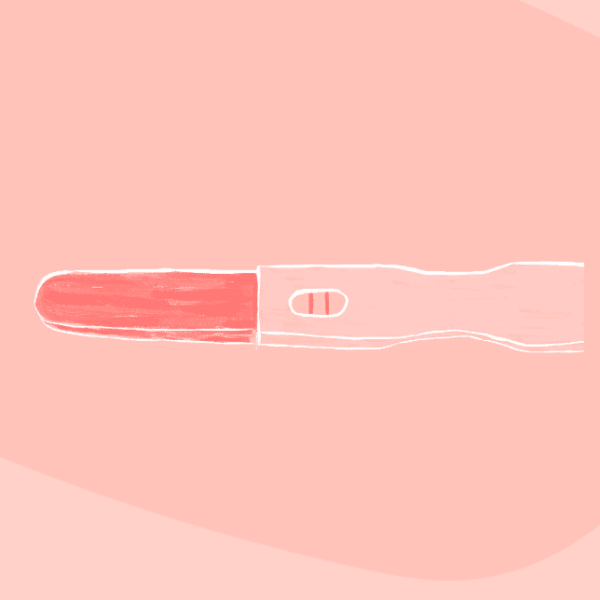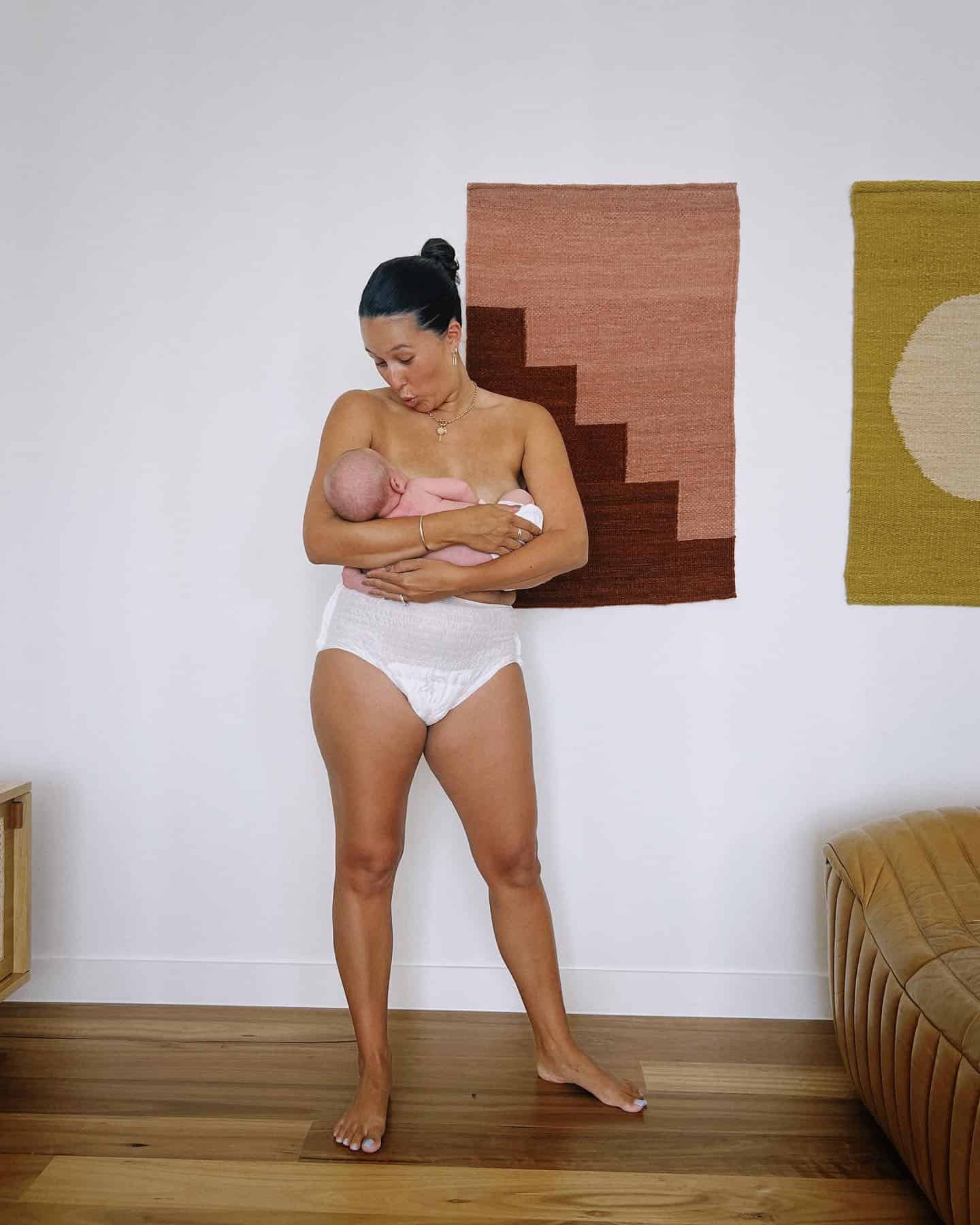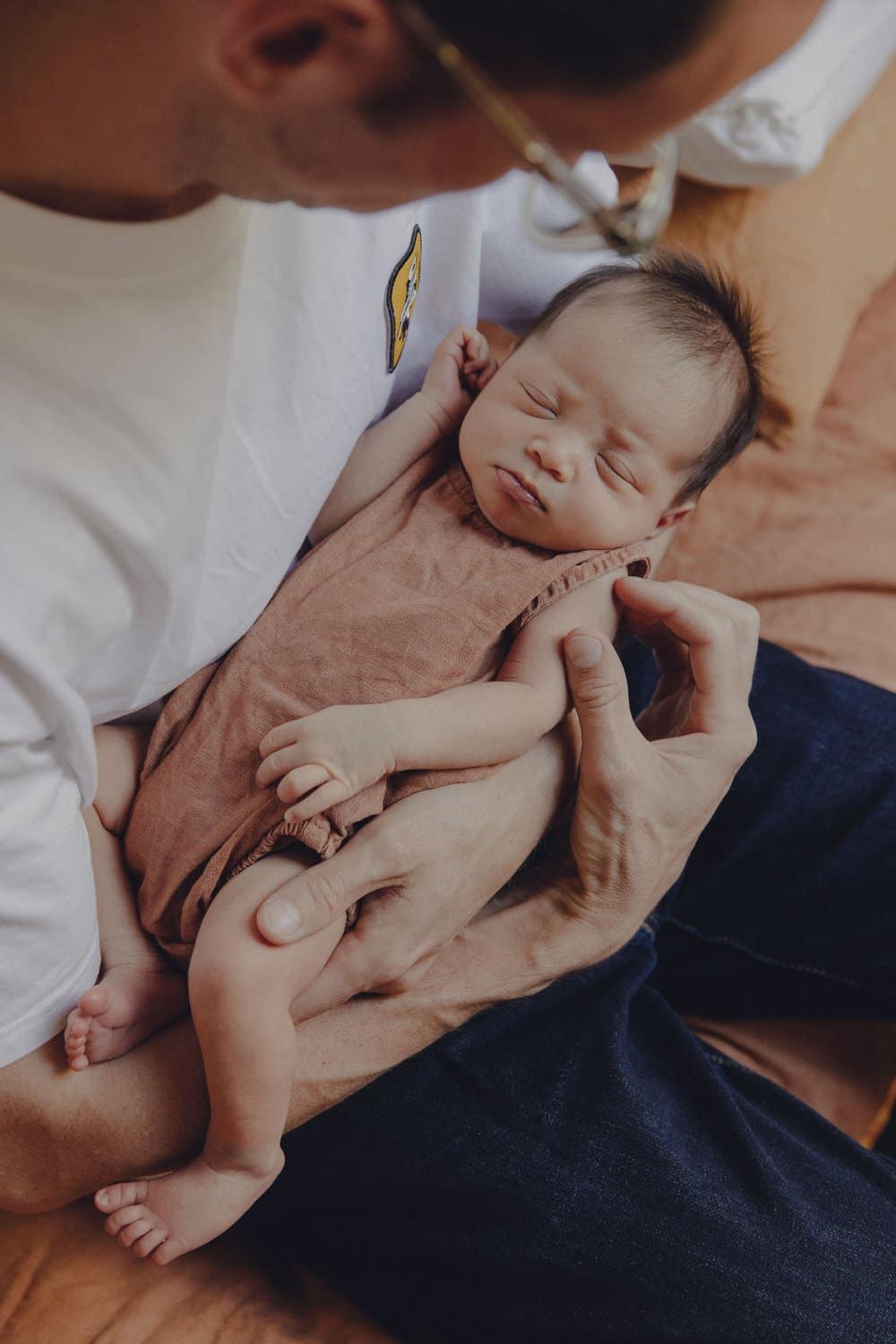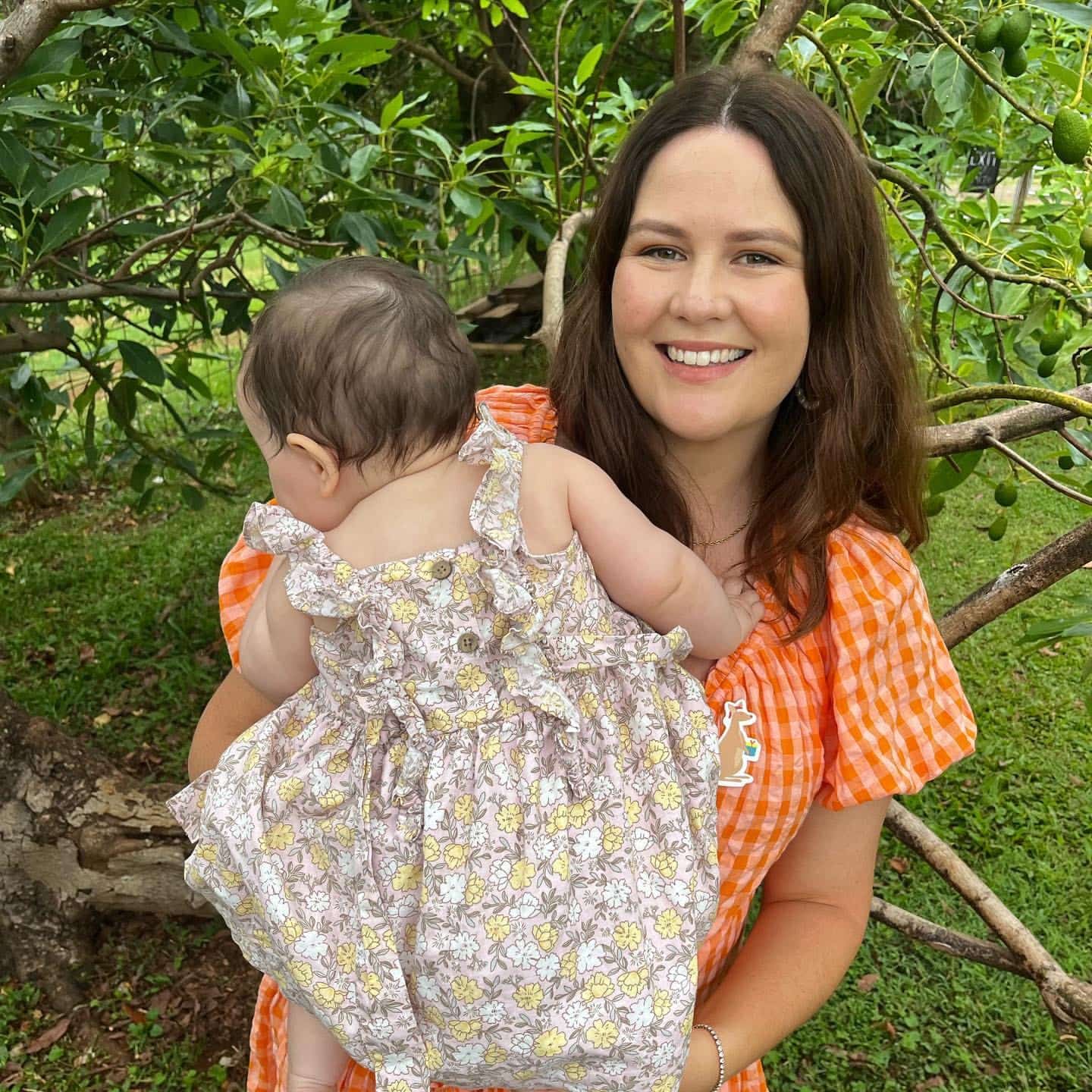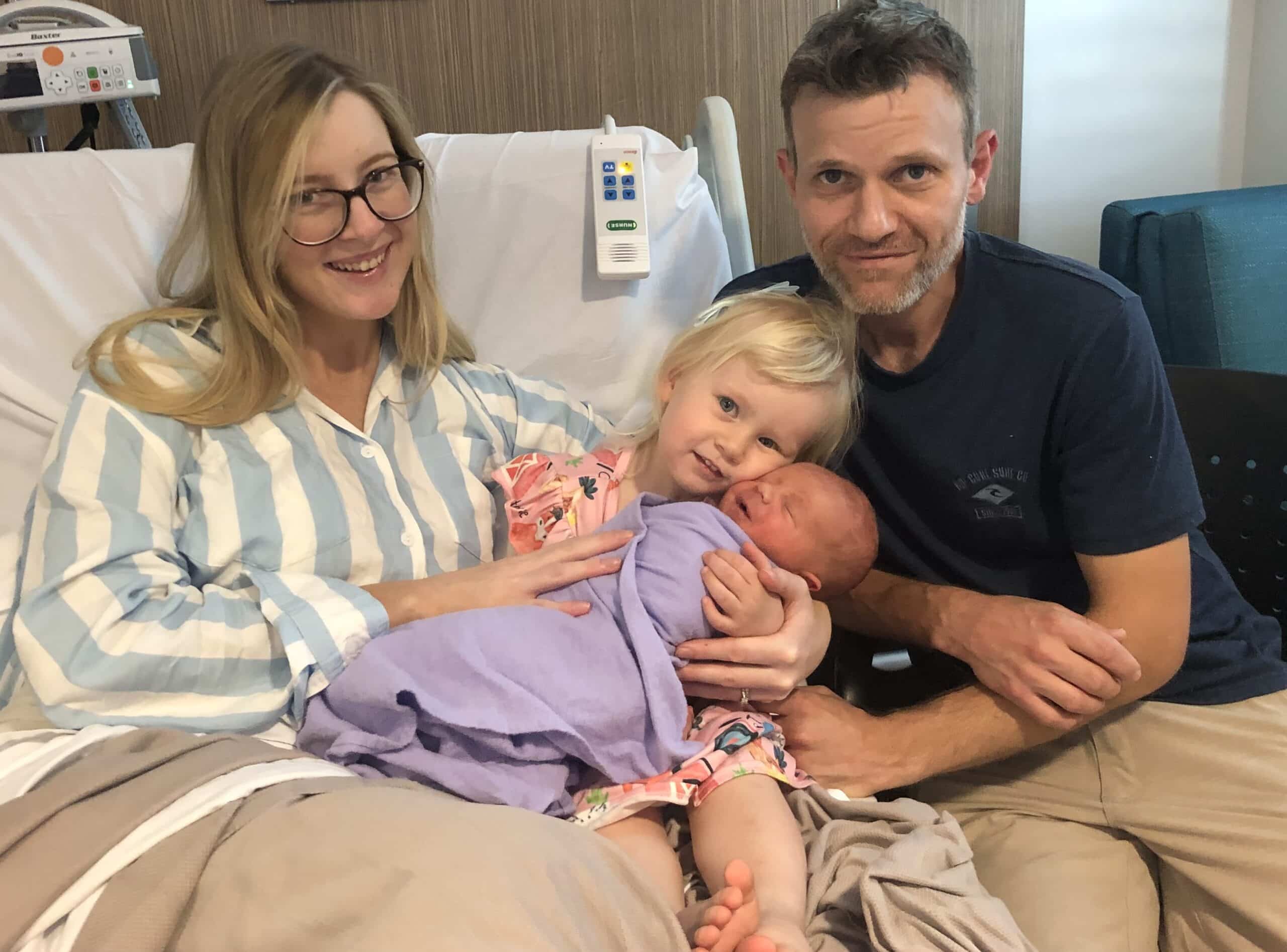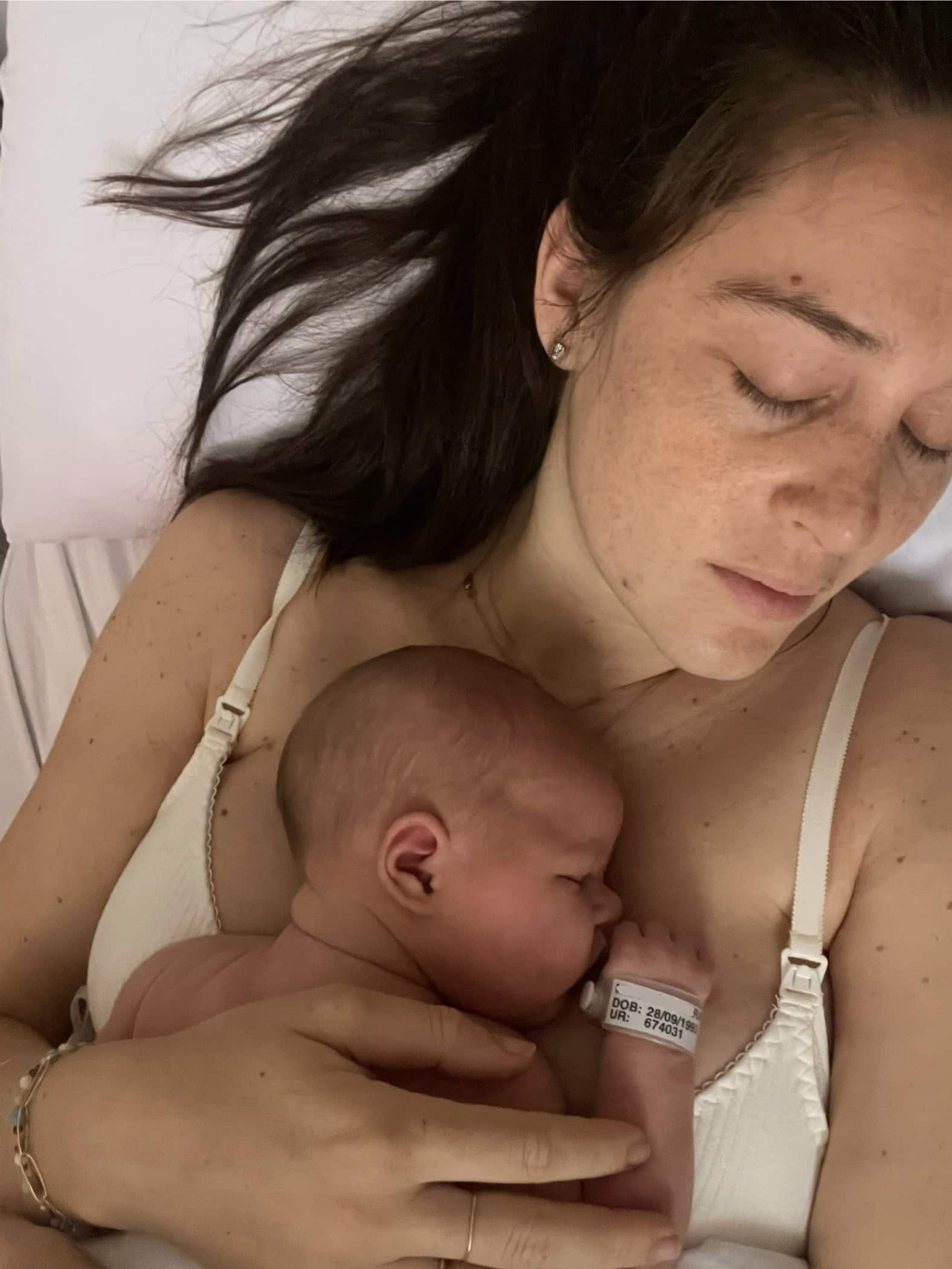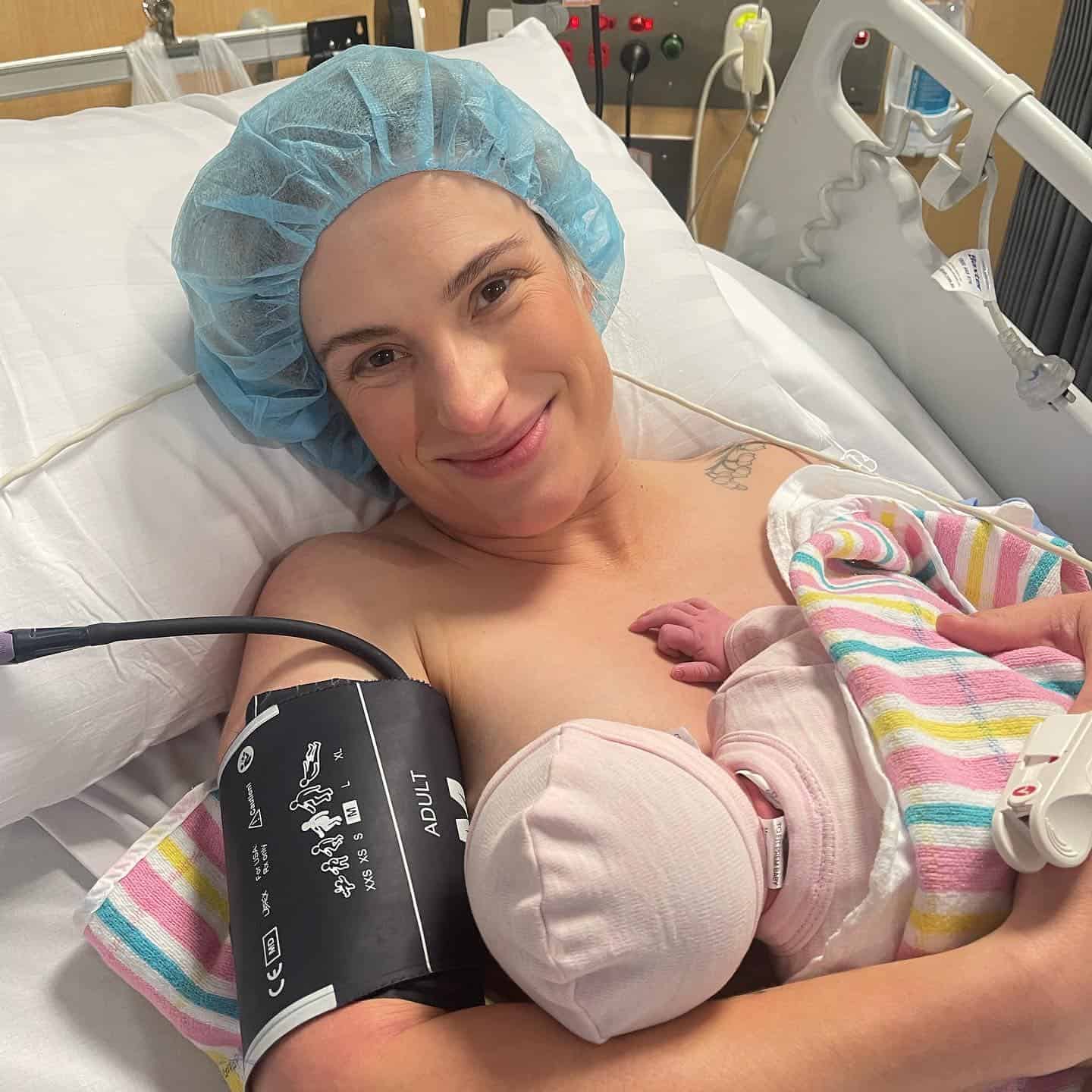Podcasts Mel’s Journey: Same-Sex Conception, IVF, and Navigating Birth Plans
EPISODE 550
Mel’s Journey: Same-Sex Conception, IVF, and Navigating Birth Plans

The Decision to Start a Family
Mel and Peta met in 2015 while teaching at the same school in Western Australia. Early in their relationship, they discussed their shared desire to have children, with Mel always knowing she wanted to carry a pregnancy. “We had lots of sort of fantastical conversations about how we might do it. And we really liked the idea of both carrying child using the other person’s egg and then we’d both have a connection to the child either through genetics or through having carried them in a pregnancy and breastfed them,” Mel explains.
However, they ultimately decided against this approach to avoid the invasiveness and expense of IVF if it wasn’t necessary. They spent several years traveling and establishing their careers before feeling ready to start their family journey in 2021.
Navigating the Donor Selection Process
Working with Dr. Melissa Cameron at Melbourne IVF, Mel and Peta chose to use an unknown donor through the clinic’s recruited donor program. This decision was influenced by Mel’s own experience as a child of a same-sex relationship in the 1980s, where she had control over contact with her donor.
The donor selection process proved more complex than anticipated. “We were so surprised to find that the pool just had six people in it and we actually weren’t eligible for any of them when we got to the top of the list because they were categorised by IVF or IUI,” Mel recalls. The categorization was based on sperm quality, with higher quality samples reserved for IUI procedures.
After months of checking the donor pool obsessively, Mel finally found a suitable Caucasian IUI donor. “I started trying to call Peta, but she was teaching… So I left this series of hilarious voicemails, starting with, so there’s a donor and I’d love to talk to you about it… through to like, you need to answer the phone. Like we’re going to miss this.”
The IUI Experience
Mel and Peta proceeded with two cycles of intrauterine insemination using unmedicated cycles. Mel describes the process: “I would go in every couple of days to check the follicle growth and what they were looking for was one dominant follicle… when that follicle reached I think it was 21 millimeters… I took a trigger shot of HCG to trigger that follicle to ovulate.”
When both IUI cycles were unsuccessful, they faced pressure to move to IVF. Mel received what she describes as an inappropriate email from the donor team: “This is your last chance at IUI. When this cycle isn’t successful, you will have to give up your donor and you you will have to move to IVF.” This communication style contrasted sharply with the supportive care they received from their specialist.
Transitioning to IVF
The move to IVF required significant mental adjustment. “We just hadn’t considered the possibility that it wouldn’t work and so we we sort of thought well we’ll go back to the drawing board and really think about this,” Mel reflects. Fortunately, they were able to continue with the same donor, who had been recategorised for IVF use.
The IVF cycle coincided with a family emergency when Mel’s mother broke her kneecap, creating additional stress during the hormone stimulation phase. Despite these challenges, the cycle was highly successful: “We had 33 eggs collected so no wonder I was sore there were a lot of eggs but we were just we couldn’t believe it. We were so lucky and 22 of them fertilised and then we ended up with nine day five blastocyst embryos.”
Birth Planning and Hospital Experience
Mel prepared extensively for birth, creating detailed plans for various scenarios. “I had a detailed birth plan that was set into sort of, you know, plan A, unmedicated, water birth, physiological birth… But our birth plan, yeah, did have these sorts of options. If plan A didn’t go to plan, what would plan B look like.”
Labour began spontaneously at 40 weeks and three days. “A contraction woke me up and I thought, oh, is that a contraction? Oh, probably not. So I lay there for a few minutes, had another one and then thought, oh, I’ve gone into spontaneous I was like, this is amazing.”
The early labour at home was a beautiful experience: “We spent a few more hours in the morning, just in bed together. And again, it was just so cozy and lovely. And I just loved that part of the labour.” They spent hours walking in their neighborhood, with Mel having contractions against trees and fences along their regular dog-walking route.
Hospital Transfer and Complications
Upon arriving at the hospital, Mel discovered they were full and was placed in an assessment room rather than a birth suite. This transition proved challenging: “I realised there was nothing to do like I’d been enjoying my labour so much and managing the pain… and then I was just in a little room that wasn’t even a birth suite and there wasn’t even a yoga mat to go on the floor.”
A cervical check revealed she was only three centimeters dilated, leading to her decision to request an epidural. However, she had to wait nearly eight hours for a birth suite to become available. During this time, she developed preeclampsia with dangerously high blood pressure and low sodium levels.
After the epidural and Syntocinon, Mel experienced unusual cervical dilation patterns that confused the medical team. “The midwife in charge said, look, I haven’t really seen this before. I’m really confused about what’s happening,” she recalls. An obstetrician determined that one side was dilating while the other wasn’t, and baby Hazel wasn’t descending properly.
Caesarean Birth and Recovery Challenges
Due to the preeclampsia and lack of labour progression, a cesarean was recommended. The surgical team accommodated Mel’s preferences as much as possible: “I said, you know, is there a way to not have a screen at all? Like I’d like to watch the whole thing. They said, no, you have to have the screen, but we will take away the frame.”
Hazel was born healthy, but Mel’s blood pressure remained dangerously high. She was discharged on day two but had to return to the hospital the following day when her blood pressure reached 175 over 100. “The midwife said, look, you know, I know you’re not going to want to hear this, but you need to go back to hospital and it is an emergency.”
Future Family Planning
They plan for Peta to carry their second child using one of Mel’s frozen embryos, which raises interesting dynamics about genetic connections and birth experiences. “Peta says, there’s no way I would choose to make new embryos using my eggs. Like, this kid’s amazing. I want another one like her.”
Mel acknowledges the complexity of potentially wanting to carry again while respecting Peta’s desire to experience pregnancy and birth: “I have really clear views about what I would want to do next… And I’m really mindful of trying to work out how to let Peta have that experience, her first experience of being the person who’s pregnant and giving birth.”
Mel’s story highlights both the challenges and unique opportunities of same-sex family building. The couple faces additional costs, as same-sex families must pay for two allocations from a donor to ensure both partners can potentially carry children. “Our specialist had talked to us a little bit about this and she’d brought it up in our first appointment how discriminatory she thought it was that same-sex families had to pay twice for the sperm.”
Despite the complexities, Mel feels fortunate about their family structure: “I think we’re really fortunate that we are in the unusual position where we both get to try both roles in the parenting relationship, the person who’s pregnant and giving birth and breastfeeding, and then the person who is the support person.”
This comprehensive story offers valuable insights into the realities of same-sex conception, the importance of flexible birth planning, and the ongoing evolution of family dynamics in LGBTQ+ families.
Episode Sponsor
Let me introduce you to The Nappy Bag That’s Got Your Back (Literally)
Stylish, practical, and thoughtfully designed – this is the Baby Bag Backpack by Tottie that parents everywhere are falling in love with.
Whether you’re navigating newborn life, chasing toddlers, or just love staying organised on the go, this bag makes it easy. With 14 cleverly designed pockets, there’s a place for everything – from bottles and nappies to your laptop, snacks, and spare clothes.
There’s even a hidden compartment at the base for the messier moments (because they happen!). Complete with a luggage strap, pram clips, and a change mat, it’s your go-to for parenting with confidence. One clever bag. Five stylish colours.
You can enjoy $30 off your new bag with the code: ABS30
Head to Tottie to see their full range.
Topics Discussed
IVF, Navigating Birth Plans, Same-Sex Conception
Categories
Related Products
-
Welcome to the First Trimester
11 reviews$67.00An informative and comforting 5-part audio course guiding you through the first 12 weeks of pregnancy.
Join the conversation
Sign up to get the latest updates, freebies, podcast releases straight into your inbox
@AustralianBirthStories
Follow along with us
@AustralianBirthStories
Follow along with us
@AustralianBirthStories
Follow along with us
@AustralianBirthStories
Follow along with us
@AustralianBirthStories
Follow along with us
@AustralianBirthStories
Follow along with us
@AustralianBirthStories
Follow along with us
@AustralianBirthStories
Follow along with us
@AustralianBirthStories
Follow along with us
@AustralianBirthStories
Follow along with us
@AustralianBirthStories
Follow along with us
@AustralianBirthStories
Follow along with us
